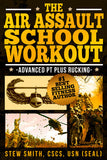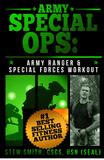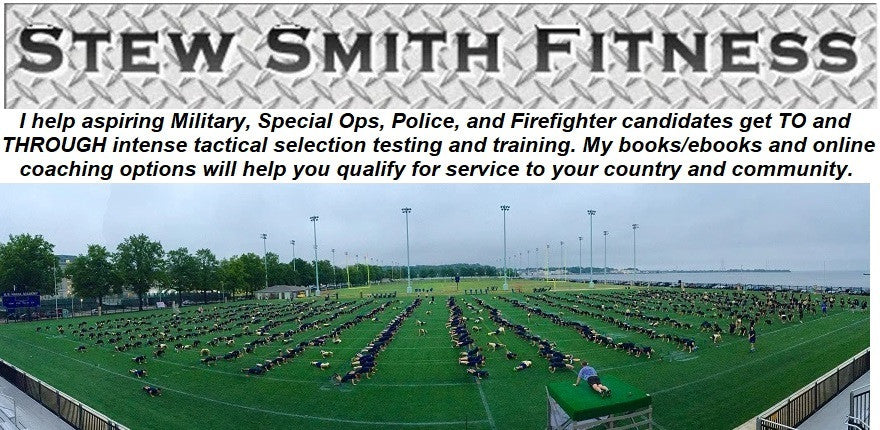 All roads to becoming a Navy SEAL, end at BUD/S - Basic Underwater Demolition / SEAL Training. There are many routes to get to sunny Coronado, California where BUD/S is located, but the only way to become a Navy SEAL is you have to finish BUD/S first. You have to get TO BUDS in order to get THROUGH BUDS - learn the difference.
All roads to becoming a Navy SEAL, end at BUD/S - Basic Underwater Demolition / SEAL Training. There are many routes to get to sunny Coronado, California where BUD/S is located, but the only way to become a Navy SEAL is you have to finish BUD/S first. You have to get TO BUDS in order to get THROUGH BUDS - learn the difference.
Below are the several options SEAL wanna-be's struggle with and definitely should know before signing any paperwork with the Navy:
First Option - Join the Navy by Enlisting...
This is the route that will give you the best chance of attending SEAL training as there are ten times more enlisted SEALs than there are officers that attend SEAL training each year. The need for enlisted SEALs will therefore always be higher than the need for officers in the Teams. That is why the SEAL officer route is more competitive. Here is the way to join the Navy and get to BUDS the quickest. Many candidates attend BUD/s with college degrees as enlisted with the hopes of going to Officer Candidate School (OCS) later in their career. It is also wise to check the official SEAL site as changes occur regularly with the admissions process / programs.
Step 1: Be able to CRUSH THE PST then go to a recruiter’s office. Choose a Spec Ops/Spec War Source Rating
Be ready to visit a recruiter (see recommendations to know when you are READY) You will have to sign up for a regular Navy Source Rating (designator - like GM gunners mate or OS operations specialist) to join the Delayed Entry Program. Ask your local recruiter about the Navy Special Warfare / Special Operations Scout Team in your area. The SEAL Scout Team Program will test you in the PST. The SCOUT Team are trained recruiters to test recruits for training by giving regularly scheduled PSTs. You have to pass the PST with BEFORE Boot camp in order to change your rate to SO, or Special Operator, to be your new designation. However, you have to pass the ELEVATED standards of the Navy SEAL Physical Screening Test (PST) to receive your contract to attend BUDS after graduation from Boot Camp.
Below are the minimum and recommended standards for the PST: How to Ace the PST
| PST Event | Minimum Standards | Recommended Standards |
| 500 yd swim | 12:30 | 8-9 minutes |
| Pushups | 50 | 80-100 |
| Sit-ups | 50 | 80-100 |
| Pull-ups | 10 | 15-20 |
| 1.5 mile timed run | 10:30 | 9-10 minutes |
Today, Navy Special Warfare has instituted a "draft" similar to the NFL draft process - where the best candidates get selected first. The better your PST, ASVAB, CSORT scores determines how soon you get to go to boot camp then BUDS, so achieving above (or beyond) the recommended standard is critical to your acceptance to go to SEAL training.
Step 2: Boot Camp Training
All recruits will report to Great Lakes, Illinois to attend basic military training. During Boot Camp, be ready to take the PST as you may take it there OR you may not take it until BUDS Prep once you complete Boot Camp. Just be ready because if you fail the PST, you are out of the program at any stage beyond Boot Camp training.
Step 3: BUD/S Prep - Pre-Training Phase (post Boot Camp and Pre-BUD/s Training)
After Boot Camp, you will workout for a living and be in sunny Coronado CA. BUDS Prep is on the BUDS compound now. Your job is to learn about the Special Warfare Communities as well start an extensive physical training program for 6-8 weeks. The Pre-training program is to help candidates get into better shape as Boot Camp does not properly prepare a BUD/S student for their advanced training programs they will see in Coronado. You still should be prepared for BUDS BEFORE you go to Boot Camp.
The Pre-training instructors are not interested in weeding anyone out at this point however people still quit or fail to pass the PST as it is not easy. The goal of this training is to teach candidates that they will not survive the next phase of training if they strive for the minimum standards in the PST. You will have to pass a BUDS Prep fitness test: (Read About All The Ways to Fail Before You Even Start Your SPec Ops Journey - Don't Be Stupid)
| The BUDS Prep ends with a modified Physical Screening Test (PST): |
|
1000-meter swim - with fins (22 minutes or faster) |
Continue to Step 3b of this article to see remaining training pipeline as it is the same for everyone after this point.
Option #2: Enlist and Serve in the Navy then Try Out for BUD/S
NOTE - This is a tough road. Many things have to work in your favor. The manning of the Teams in your year group (the year you joined) has to be open to you. Your current rate has to let you leave that community in order to go to BUDS and try to obtain the SO Special Operator rating.
This is a longer route to BUD/S that applies to enlisted as well as officers in the Navy who want to attend BUD/S. It is also the same route a former BUD/S student who did not graduate will have to do IF he wants to try to attend BUD/S again. Imagine yourself at your regular Navy command, working the day then adding in extra workouts at night to prepare for the BUD/s PST. This will be your life for a year or two or MORE. The ability to get above average PST scores is possible but it requires lots of extra effort on your part. It has been done before by many great enlisted and officers SEALs but it is a challenge and demonstrates your desire to go to BUD/S if you can get the recommended elevated scores on the PST while on active duty - especially if stationed on a ship. This is not the easy route.
You have to route a special request chit up your chain of command and have to wait until you time at your present command is completed before leaving for BUD/S. Many have arranged a deal to re-enlist in the Navy IF they can attend BUD/S at the time of the end of their first enlistment. Of course you still have to meet all of the elevated standards.
The issues you have to deal with are your current rating (job) may be undermanned and not let you go OR your year group is full of all the SEALs they need. The Year-Group is the year you joined the Navy.
Another option to BUDS that is tough as well:
If you are in another service branch, you have to join the Navy to go to BUD/s. There is no such thing as joining the Marine Corp then going to BUD/S program. You can join the Marines - BUT you have to get out of the Marines and join the Navy to go to BUD/S. Then you have year group issues that could keep you from getting to BUDS. If the year group of active SEALs in the Teams is at capacity, you will not get the chance to go to BUDS. Marines (not other services) have issues with year groups as well.
**In recent years, it has been difficult to get to BUDS this method. Most people get to BUDS from the street / not the Fleet.
Go to Step 3b below for the remaining steps of the BUD/S pipeline.
Officer options to get to BUDS - All Officer Candidates MUST Attend SOAS - SEAL Officer Assessment and Selection (read link)
Options #3: Navy SEAL Officer Programs: US Naval Academy
USNA to SEAL: First you have to get into the Naval Academy - Annapolis MD - USNA. See link for all the details of that long process. Once at the Academy, you should start training with like minded classmates as well as get to know the older students who are training every day for BUD/S. There are active duty SEALs to help with your training programs and will start the screening process your junior year. You will take many PSTs as well as have to endure BUD/S Screening - which is a 36 hour long event that mixes in some of the worst events at BUD/s into a long weekend at the Academy. Usually by your senior year, the hundred or more classmates who thought they wanted to be SEALs has dwindled down to about 60, but they are all highly qualified and only 30-35 slots each year. Your grades, leadership jobs, sports / athletic events completed, foreign languages, and even community service hours come into play into selection. You will be finally judged by a group of SEAL officers and senior enlisted in a personal interview. The SEAL Officer Community Manager / Detailor through the SOAS Process selects you. Go to Step 4 below for the remaining steps of the BUD/S pipeline.
Options #4: Navy SEAL Officer Programs: Reserve Officer Training Corps
Going to college under a Navy ROTC program is another route to get to BUD/s. Navy ROTC graduates have the opportunity to attend BUD/S after graduation. ROTC gets typically 15-25 officer slots a year for SEAL training. These are nationwide competitions among ALL ROTC programs in the nation. To say these are competitive is an understatement. If you are an excellent / above average candidate, you have a great chance at going to BUD/S. However, ROTC students compete for officer billets along side USNA and OCS candidates as well at SOAS. (see SOAS link)
Your requirements are similar to that of USNA and OCS as your grades, sports, leadership roles, and PST scores will all play a part in your acceptance. See the Official ROTC website for what colleges offer Navy ROTC.
Go to Step 3b below for the remaining steps of the BUD/S pipeline.
Options #5: Navy SEAL Officer Programs: Officer Candidate School - OCS
You need to have a college degree before applying to the OCS board. There are many opportunities military wide for young college grads seeking to lead in the military, however officer slots for any of the Special Forces units are few and hard to come by. In fact, latest numbers for SEAL officer candidates were about 1 in 8 get accepted to attend SEAL training after OCS. OCS candidates seeking to attend BUDS after OCS will attend SOAS as well as a civilian prior to OCS.
Applying to Officer Candidate School and wanting to become a Navy SEAL means you will actually be selected to go to BUDS immediately after you complete OCS. You will be accepted to attend SEAL training by a board of SEAL officers and then they will send you to OCS first with immediate follow on training at BUD/S.
| OFFICER SELECTION PROGRAM SINCE SUMMER 2014 |
|
Starting the Summer 2014, ALL officer candidates will get the opportunity to test themselves at BUDS. What used to be called mini-BUDS has been changed to an actual BUD/S Selection Program now called SOAS - SEAL Officer Assessment and Selection. Mini-BUDS was more of a summer camp compared to BUD Selection program as this program is not just a Midshipman Summer Cruise - it is a selection and screening course. USNA and Navy ROTC Midshipmen, qualified USAFA, USMA cadets, USMMA midshipmen, and highly qualified OCS candidates all train together and are constantly screened by BUD/S instructors. The details of this program are limited and all candidates are required to sign a non-disclosure agreement. Just know that you will be tested in running, rucking, swimming, water skills, PT, log PT, small boat drills, and many more events. You will be graded at just about everything you do from push-ups to leadership skills. Interviews, psychological evaluations, and the two weeks of daily challenges will expose your personality, strengths, and weaknesses. The BUD/S recruiters and Officer Community Manager will determine who attends BUDS in the following months and candidates will learn later in the Fall the same year. |
Go to Step 3b below for the remaining steps of the BUD/S pipeline.
Step 3b: BUDS Prep: Navy SEAL Training (BUD/S) Pre- Training and INDOC - All roads get you to BUDS Prep in Coronado.
Once you arrive at BUD/S you will join BUDS Prep. BUD/SPrep is now in Coronado as of late 2021 and is even better and challenging 6-8 week training to thoroughly test the students in all the basics from the PST (again!), swimming with fins in open water, obstacle courses, timed beach runs, as well as challenging PTs on the Grinder, and of course - surf zone training. Once you have passed the challenges of Prep and not quit after the instructors personally test your desire, you get the opportunity to advance to Phase 1.
Step 4: Phase 1,2,3 at BUD/S
Now training begins at First Phase. This is where most BUD/S students quit or get injured. This phase is where you will meet challenges regularly such as four mile timed beach runs, 2 mile ocean swims, BUD/S obstacle course, log PT, hundreds of reps of pushups, pullups, and ab exercises. Drown-proofing, life saving, and underwater knot tying are also challenging tests you must pass to continue training. How Bad Do You Want It?
 Of course there is Hell Week, which is a 120 hour long event designed to test your desire to be a Navy SEAL. You may sleep a total of 3-4 hours in five days and log more than 200 miles of running, swimming, and paddling boats. This phase is the ultimate test of your ability to be a team player - whether you are under a log or boat, you will quickly learn who you want on your team.
Of course there is Hell Week, which is a 120 hour long event designed to test your desire to be a Navy SEAL. You may sleep a total of 3-4 hours in five days and log more than 200 miles of running, swimming, and paddling boats. This phase is the ultimate test of your ability to be a team player - whether you are under a log or boat, you will quickly learn who you want on your team.
 Phase 2 is Dive Phase. You should have a basic understanding of SCUBA diving prior to attending though it is not a requirement to be SCUBA qualified. You will be required to use algebra to solve diving math problems as well diving physics. The most important laws to know in Navy SEAL diving are Boyle's Law and Dalton's Law of Partial Pressure. You will learn open-circuit SCUBA and closed circuit (oxygen re-breathers) in Dive Phase as well as one of the most challenging tests at BUDS - POOL COMPETENCY. This test is designed to teach and test your ability to remain calm in the event of everything going wrong underwater. You will also swim a six mile ocean swim during this phase.
Phase 2 is Dive Phase. You should have a basic understanding of SCUBA diving prior to attending though it is not a requirement to be SCUBA qualified. You will be required to use algebra to solve diving math problems as well diving physics. The most important laws to know in Navy SEAL diving are Boyle's Law and Dalton's Law of Partial Pressure. You will learn open-circuit SCUBA and closed circuit (oxygen re-breathers) in Dive Phase as well as one of the most challenging tests at BUDS - POOL COMPETENCY. This test is designed to teach and test your ability to remain calm in the event of everything going wrong underwater. You will also swim a six mile ocean swim during this phase.
Phase 3 is Land Warfare. You will enjoy shooting, learning and using demolitions such as C-4 as well as rucking, patrolling, shooting and moving, and land navigation. This phase is full of potential safety violations so be careful where you point your weapon, have weapon on safe when not in use, as well as many other potential dangers that involve demolition and marksmanship. The PT, runs, and swims do not get easier - in fact, you will be in your best shape ever during third phase and able to run 10-15 miles, swim 3-4 miles, and ruck 20 miles when on San Clemente Island.
Congratulations - you have finished BUD/S but your SEAL training is not over - just the basics are over.
SQT - After BUD/S graduation, you go to SQT - SEAL Qualification Training. SQT is advanced training program that takes the individual who graduated BUD/S and forms a TEAM that is capable of operating in the water, underwater, from planes and helicopters, ropes and parachutes, boats, and on foot. You will learn and master the basic insertion methods used by SEALs and conduct training missions. There is also a mix of many hours of classroom training where you learn about intelligence gathering, designing missions, and moving together as a team from insertion to extraction of a mission.
Now after BUD/S and SQT, you get to go to the SEAL Team that selected you and become a "new guy" and prove yourself all over again to the veteran SEALs you will be joining on combat deployments. You will continue to learn something new each day of your career so stay in "receive mode" and listen to those who have been there and done that.
There is More To StewSmithFitness.com than You May Know

Who is Stew Smith CSCS? Coach, Trainer, Writer, Podcaster: I'm the former Navy SEAL that tactical candidates go to for books, eBooks, local and online coaching to prepare themselves to get to and through intense tactical assessment and selection programs and qualify for service in their chosen tactical profession. See More at StewSmithFitness.com
(In fact, there are more than 40 books, 1000+ articles, online coaching - and more)
Where to Find More Information About Optimal Performance Training Programs
When you start training again, consider the seasonal tactical fitness model. I call it A WAY to train and obviously not the only way to train. But it offers the opportunity to never neglect your weaknesses, helps with flexibility and mobility, but will also put you at a level of physical abilities where you are happy with your overall ability to do just about anything. We have a system where the seasons dictate our training. When it is nicer outside, we tend to run and do more calisthenics. When it is colder and not so nice, we lift more, run less, and still maintain our outdoor activities with shorter runs and rucks. Check it out: Seasonal Tactical Fitness Periodization System.
Where Optimal Performance Will Be Tested Each Day
The Specific Military / Special Ops Physical Fitness Workouts
Navy SEAL Workout Phase 1
Navy SEAL Workout Phase 2 - 3
Navy SEAL Workout Phase 4 Grinder PT
Navy SWCC Workout
Army / Air Force Advanced Fitness / Special Ops
Army PFT Workout (Prep For Rucking, OPAT, ACFT)
Army Special Forces / Ranger Workout
Army Air Assault School Workout
Army Airborne Workout
Air Force Special Warfare IFT / OFT / Selection Prep






Advanced Running Program - Special Ops Supplement Plan
USMC RECON / MarSOC Workout
USMC OCS / TBS Workout
USMC IST and PFT
The Combat Conditioning Workout
Air Force PJ / CCT Workout Battlefield Airman Prep Course
The UBRR Upper Body Round Robin Workout / Spec Ops version
The Coast Guard Rescue Swimmer / Navy SAR Workout
The Service Academy Workout (West Point, Navy, Air Force Academy)
The Navy, Air Force, Marine Corp Boot Camp Workout
Online Coaching Options
Online PT CLUB - Weekly Workouts created personally for you.
New Member's Only Content / Services Program!
If you want access to years worth of workouts, many of the top eBOOKs, favorite workouts of the week, free fitness APP, closed Facebook Group, video / picture library of exercises, and more access to LIVE Q/A sessions check out the Stew Smith Fitness Members Section.
The dashboard below has the links to all the information, archives, videos, and links to workouts, podcasts, live Q and A lessons. 
Consider this! - A Membership Program and Gain Access to Exclusive Content
(click for Fitness Club Dashboard - members only)
Questions? Just email - Stew@StewSmith.com
At StewSmith.com - List of Products and Services
- FREE Articles
- Podcasts and Swimming Videos (Youtube, TikTok, Instagram)
- eBooks
- Books and eBooks in PRINT
- Stew Smith Fitness Club membership site
- Online Coaching
Stew Smith Fitness













